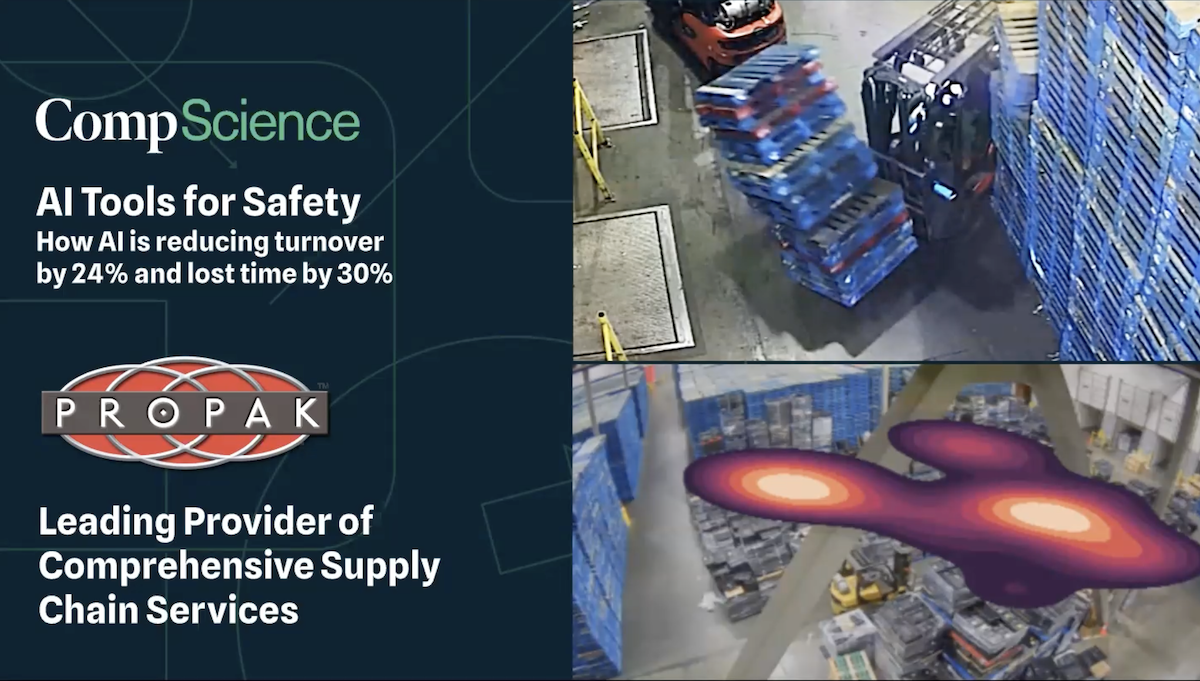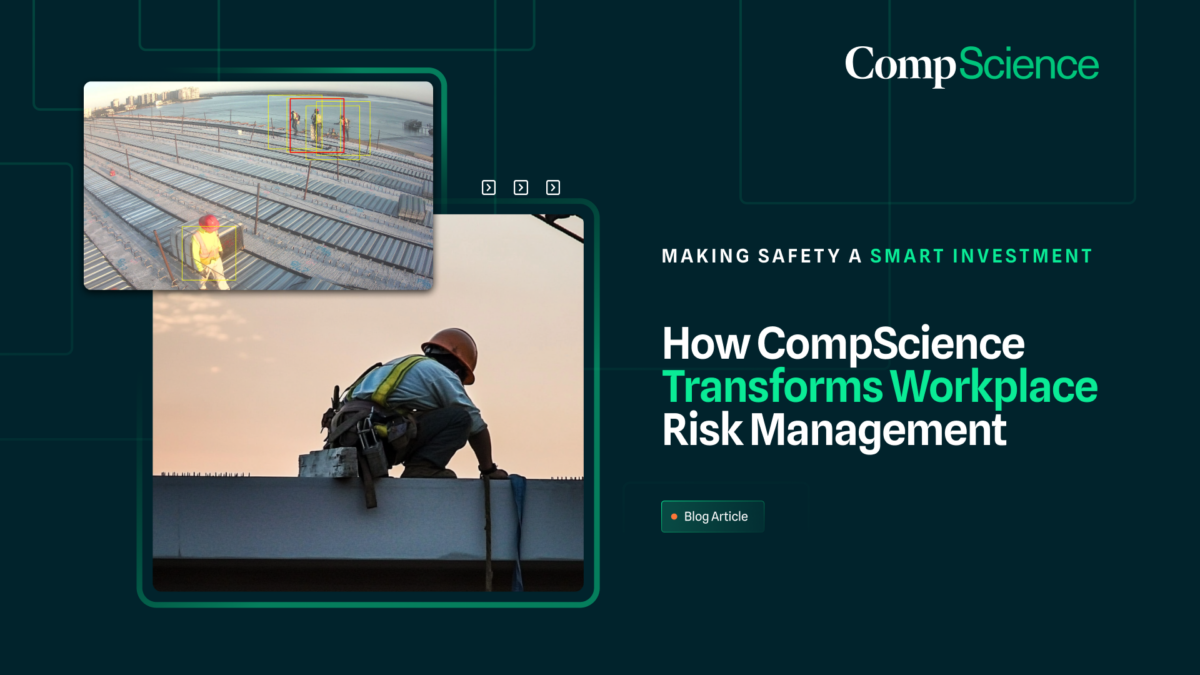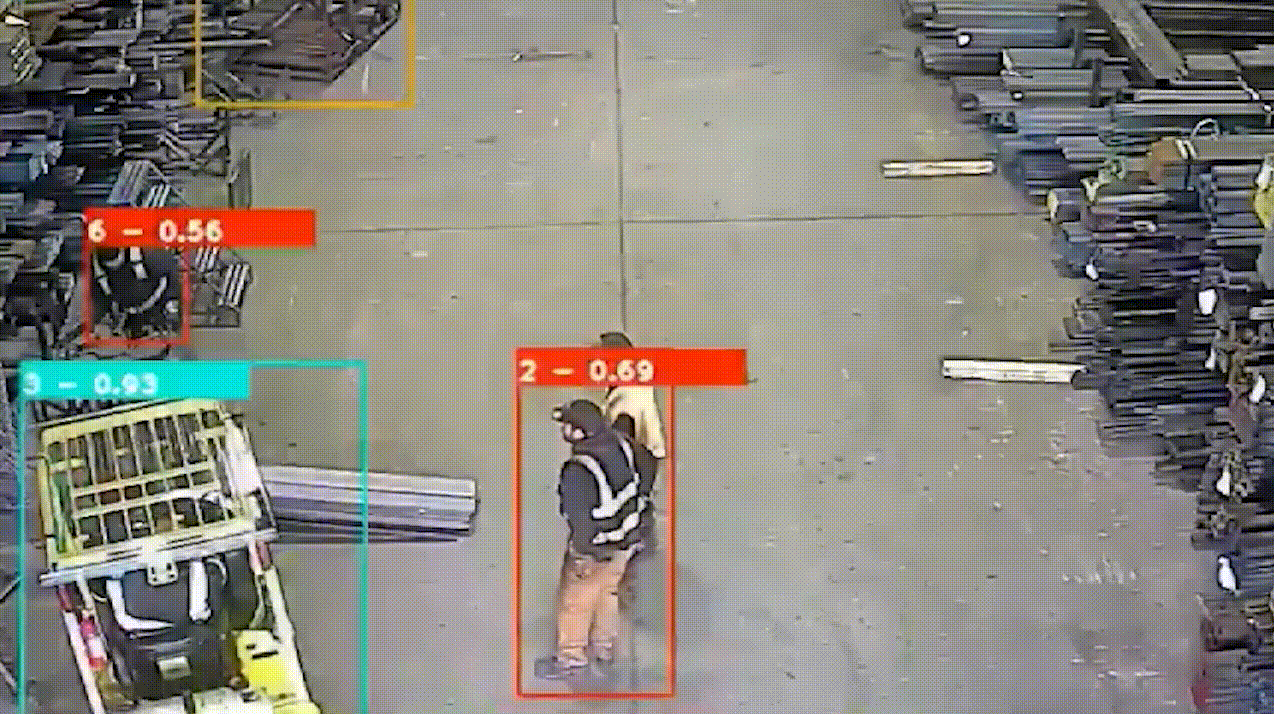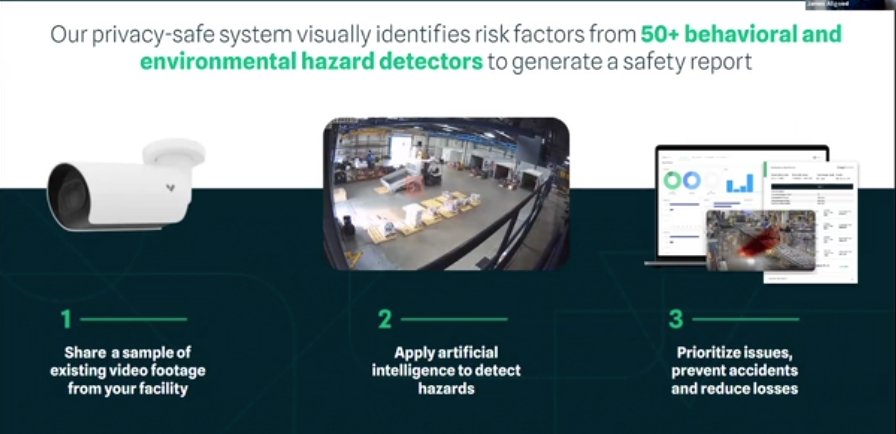Annoucement, Computer Vision, Workplace Safety
Computer Vision Safety
Computer vision is increasingly being used to enhance workplace safety by identifying potential hazards and improving safety protocols. The Intelligent Safety Platform from CompScience leverages data science to present computer vision “detections” for safety improvements. Learn more about Safety Analytics from the team at CompScience.
Here are the top five approaches for computer vision safety:
- Identifying unsafe behaviors: Computer vision systems can be used to monitor workers and identify potentially hazardous behavior, such as workers not wearing the required personal protective equipment or workers operating machinery in an unsafe manner. By identifying unsafe behaviors in real-time, employers can take corrective action to prevent accidents and injuries.
- Hazard detection: Computer vision can be used to detect potential hazards in the workplace, such as spills, debris, or equipment malfunctions. By identifying these hazards early on, employers can take steps to correct the issue before an accident occurs.
- Safety training: Computer vision systems can be used to simulate hazardous scenarios and provide workers with realistic safety training. For example, virtual reality simulations can be used to train workers on how to respond to emergencies or hazardous situations.
- Social distancing: In the wake of the COVID-19 pandemic, computer vision has been used to enforce social distancing protocols in the workplace. By using computer vision to monitor the distance between workers, employers can help prevent the spread of the virus and keep workers safe.
- Predictive maintenance: Computer vision can be used to monitor equipment and identify potential malfunctions before they occur. By identifying issues early on, employers can perform preventative maintenance and avoid costly downtime or accidents.
Overall, computer vision has great potential to improve workplace safety by identifying potential hazards, monitoring worker behavior, and providing realistic safety training. However, it is important to ensure that these systems are implemented in a safe and ethical manner, and that they do not infringe on worker privacy or perpetuate biases and discrimination. With the right implementation and oversight, computer vision can be a valuable tool for improving workplace safety and preventing accidents and injuries.
Learn more about Improving Workplace Safety with Computer Vision.









